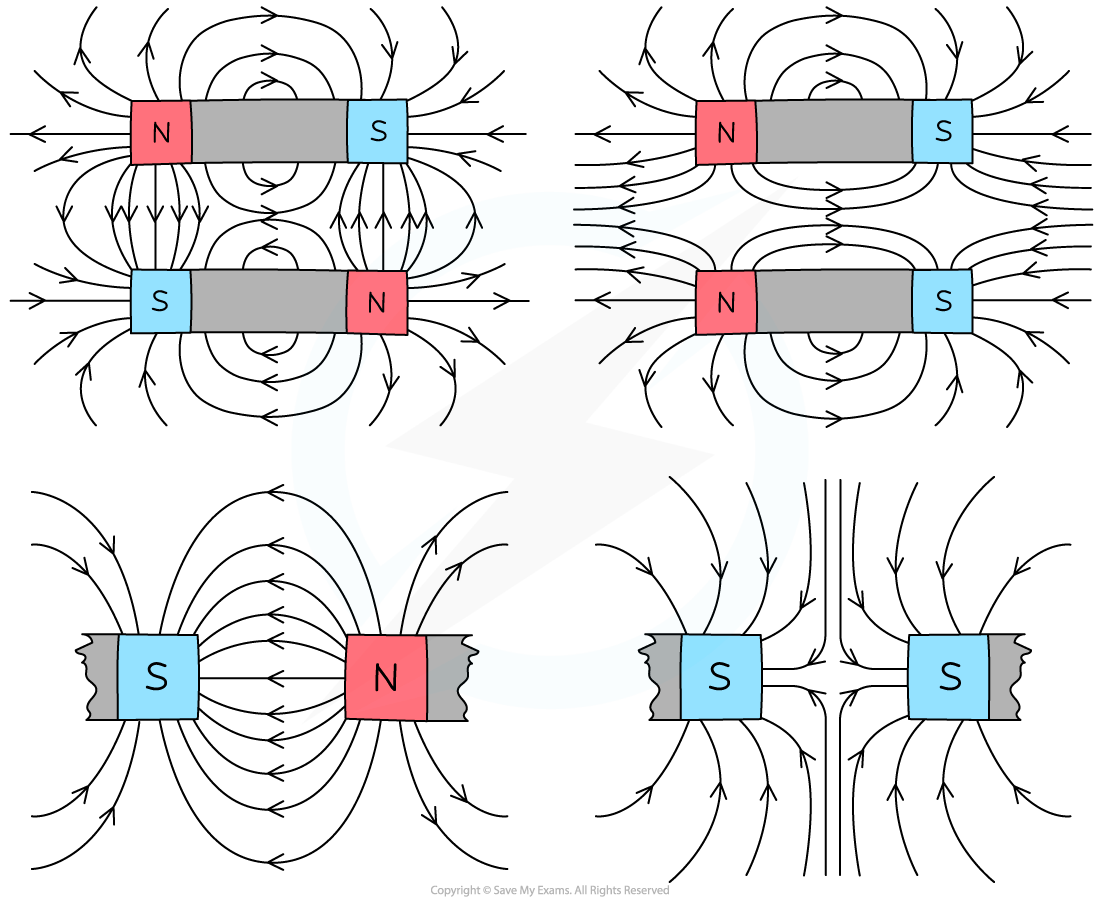Magnetic Fields (Oxford AQA IGCSE Combined Science Double Award): Revision Note
Exam code: 9204
Magnetic Fields
A magnetic field surrounds all magnets
A magnetic field is defined as:
The space around a magnet where a force acts on another magnet or a magnetic material (such as iron, steel, cobalt and nickel)
Magnetic field lines
Magnetic field lines represent:
The strength of the magnetic field
The direction of the magnetic field
The spacing of field lines shows the strength of the field
When the field lines are closer together, the field is stronger
When the field lines are further apart, the field is weaker
Field lines always have an arrow indicating the direction of the field line
The direction of the field line shows the direction that the magnetic force would act
The field lines always go from a north pole to a south pole
Uniform magnetic field
A uniform magnetic field is where the field lines are equally spaced
All act in the same direction
Show the same strength at every point
A uniform magnetic field can be found between the opposite poles of two bar magnets or inside a solenoid
Uniform magnetic field

Magnetic field around one bar magnet
The magnetic field is strongest at the poles
Therefore, the magnetic field lines are closer together
The magnetic field becomes weaker as the distance from the magnet increases
Therefore, the magnetic field lines get further apart
Magnetic field around a bar magnet

Magnetic field around two bar magnets
Two bar magnets can repel or attract, the field lines will look slightly different for each
Two attracting bar magnets placed end to end have:
A uniform field going from north to south between the nearby poles
Further away from the magnets, the field lines get further apart
Two repelling bar magnets placed end to end have:
Field lines going into the south poles or out of the north poles and not connecting at the nearest side
This creates a space between the magnets where there is no field present
Magnetic field around two bar magnets placed end to end

In a less common side-by-side configuration, the field lines still show attraction between opposite poles and repulsion between like poles
Magnetic field around two bar magnets placed side to side

Examiner Tips and Tricks
If you are asked to draw the magnetic field around a bar magnet remember to indicate both the direction of the magnetic field and the strength of the magnetic field.
Do this by:
Adding arrows pointing away from the north pole towards the south pole
Make sure the magnetic field lines are further apart as the distance from the magnet increases

Unlock more, it's free!
Did this page help you?